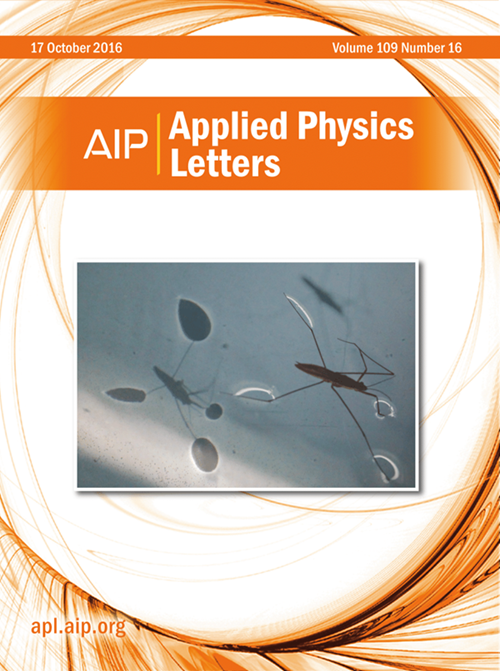惰性气体离子注入法在 CuI 中实现缺陷工程诱导的塞贝克系数和载流子浓度解耦
IF 3.6
2区 物理与天体物理
Q2 PHYSICS, APPLIED
引用次数: 0
摘要
碘化铜(CuI)是用于透明电子器件和热电发电机的主要 p 型无毒且富含地球资源的半导体材料。缺陷在决定载流子浓度、散射过程以及材料的热电性能方面起着至关重要的作用。作为缺陷工程的结果,在植入惰性气体离子(Ne、Ar 或 Xe)后,薄膜 CuI 的功率因数从 332±32 μW m-1K-2 提高到 578±58 μW m-1K-2。功率因数的提高是由于通过改变散射机制确定了塞贝克系数和电导率的解耦。离子注入会产生大量的 Frenkel 对,而 Frenkel 对会抑制 CuI 中的补偿供体,密度泛函理论计算也支持这种情况。补偿供体抑制导致霍尔载流子浓度显著提高,从 6.5×1019±0.1×1019 增加到 11.5×1019±0.4×1019 cm-3。这项工作通过离子注入引入有益的点缺陷,为将 CuI 发展成为用于电子和热电发电机的透明导电材料迈出了重要一步。本文章由计算机程序翻译,如有差异,请以英文原文为准。
Defect engineering-induced Seebeck coefficient and carrier concentration decoupling in CuI by noble gas ion implantation
Copper(I) iodide, CuI, is the leading p-type nontoxic and earth-abundant semiconducting material for transparent electronics and thermoelectric generators. Defects play a crucial role in determining the carrier concentration, scattering process, and, therefore, the thermoelectric performance of a material. As a result of defect engineering, the power factor of thin film CuI was increased from 332±32 to 578±58 μW m−1K−2 after implantation with noble gas ions (Ne, Ar, or Xe). The increased power factor is due to a decoupling of the Seebeck coefficient and electrical conductivity identified through a changing scattering mechanism. Ion implantation causes the abundant production of Frenkel pairs, which were found to suppress compensating donors in CuI, and this scenario was also supported by density functional theory calculations. The compensating donor suppression led to a significantly improved Hall carrier concentration, increasing from 6.5×1019±0.1×1019 to 11.5×1019±0.4×1019 cm−3. This work provides an important step forward in the development of CuI as a transparent conducting material for electronics and thermoelectric generators by introducing beneficial point defects with ion implantation.
求助全文
通过发布文献求助,成功后即可免费获取论文全文。
去求助
来源期刊

Applied Physics Letters
物理-物理:应用
CiteScore
6.40
自引率
10.00%
发文量
1821
审稿时长
1.6 months
期刊介绍:
Applied Physics Letters (APL) features concise, up-to-date reports on significant new findings in applied physics. Emphasizing rapid dissemination of key data and new physical insights, APL offers prompt publication of new experimental and theoretical papers reporting applications of physics phenomena to all branches of science, engineering, and modern technology.
In addition to regular articles, the journal also publishes invited Fast Track, Perspectives, and in-depth Editorials which report on cutting-edge areas in applied physics.
APL Perspectives are forward-looking invited letters which highlight recent developments or discoveries. Emphasis is placed on very recent developments, potentially disruptive technologies, open questions and possible solutions. They also include a mini-roadmap detailing where the community should direct efforts in order for the phenomena to be viable for application and the challenges associated with meeting that performance threshold. Perspectives are characterized by personal viewpoints and opinions of recognized experts in the field.
Fast Track articles are invited original research articles that report results that are particularly novel and important or provide a significant advancement in an emerging field. Because of the urgency and scientific importance of the work, the peer review process is accelerated. If, during the review process, it becomes apparent that the paper does not meet the Fast Track criterion, it is returned to a normal track.
 求助内容:
求助内容: 应助结果提醒方式:
应助结果提醒方式:


